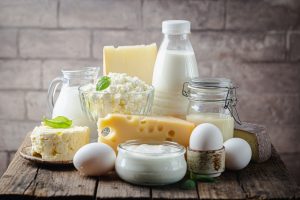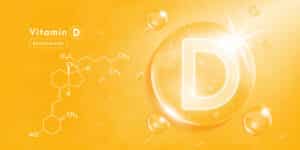When it comes to nutritional issues, medical experts typically recommend leaning towards low-fat products to promote health. However, research published in Europe’s leading reproductive medicine journal, Human Reproduction, shows that this is not always the best strategy. In fact, scientists have found that consuming whole milk and eating ice cream appears to be better for women trying to conceive than a diet consisting of low-fat dairy products like skim milk and yogurt.
Low-Fat Dairy Products Increase the Risk of Anovulatory Infertility
Clarifying the question of what effects dairy products have on fertility is very important, according to the researchers, since nutrition experts mostly recommend low-fat dairy products. This turns out to be healthier in many cases, but this strategy could be counterproductive for women planning a baby, as research suggests it increases the risk of anovulatory infertility. In women who suffer from anovulation, ovulation does not take place, which is why no egg cell can be fertilized.
In their prospective study, American researchers identified 18,555 women between the ages of 24 and 42 with no history of infertility who had attempted to conceive or became pregnant between 1991 and 1999. The women were part of a much larger study of 116,000 women in The Nurses’ Health Study II. Every two years, the women completed a questionnaire asking if they had been trying to conceive for more than a year without success, and what caused them to be unable to conceive. The women also provided information on how often they had consumed certain foods and drinks on average in the past year. Over the eight years, 438 healthy women reported infertility due to ovulatory dysfunction.
The study results showed that women who ate two or more servings of low-fat dairy daily increased their risk of ovulation-related infertility by more than 85 percent compared to women who ate less than one serving of low-fat dairy. Conversely, when women consumed at least one serving of high-fat dairy per day, they were able to reduce their risk of anovulatory infertility by more than 27 percent compared to women who ate one or less high-fat dairy per week.
Total dairy intake was not associated with the risk of anovulatory infertility, but when the low-fat and high-fat foods were considered separately, the researchers found a positive association between low-fat dairy intake over five servings per week and the risk of anovulatory infertility, as well an inverse association between the intake of high-fat dairy foods and the risk of developing the condition.
The More Ice Cream, the Better
Another analysis of the results, which examined specific foods, showed that an extra serving of a low-fat dairy product like yogurt appeared to increase the risk of anovulatory infertility by 11 percent when total daily calorie intake remained the same. In contrast, an additional daily serving of a high-fat formula such as whole milk was associated with a 22 percent lower risk (calorie intake unchanged). The study showed that the more ice cream the women ate, the lower their risk, so a woman who ate ice cream two or more times a week had a 38 percent lower risk than a woman who ate less than once a week the sweet treat.
The researchers believe that the presence of a fat-soluble substance that improves ovarian function could explain the lower risk of infertility from high-fat dairy products. Ingestion of milk fat, or a fat-soluble substance found in dairy products, may partially explain the inverse association between high-fat dairy products and anovulatory infertility.
Previous studies suggested that lactose (a sugar found in milk) could be linked to anovulatory infertility, but this study found neither a positive nor a negative association for this, and there was also no association between the intake of calcium, phosphorus or vitamin D and anovulatory infertility.





